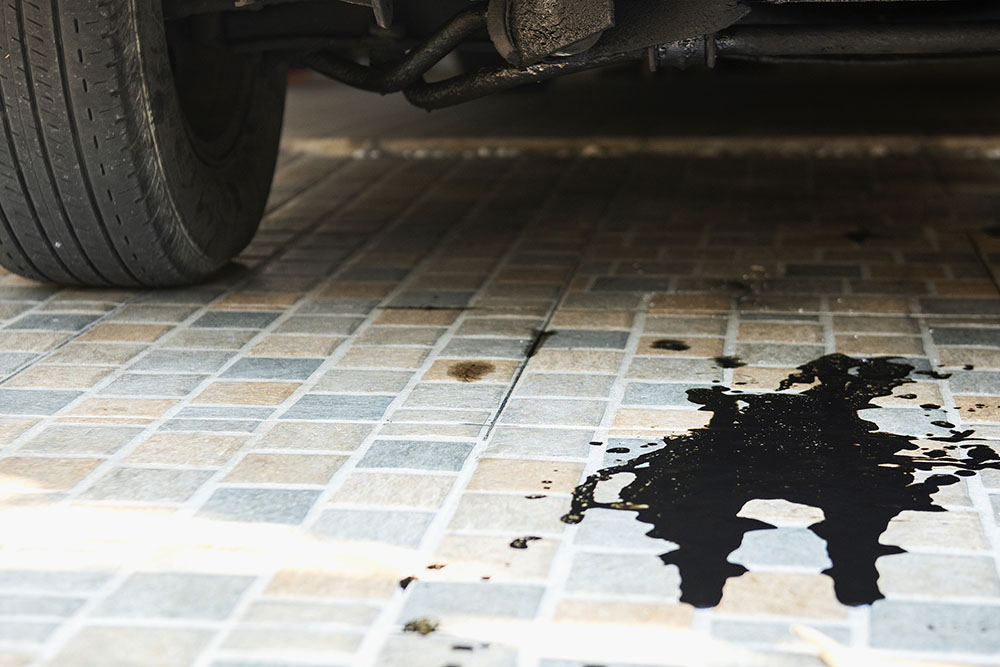The Spring Leak: Why It’s Important To Check Belts, Hoses In March

Anyone who has peaked underneath the hood knows modern vehicles are stuffed with a mile of hoses, belts, lines and wires.
And that’s the problem.
All that rubber, copper and plastic deteriorates over time. Hot weather, cold weather, humidity, ice and ozone–natural processes are at work breaking down parts that keep your vehicle running safely.
“Spring temperature changes often cause seals and threads at the ends of hoses to expand and contract.” says Al Kostecki, a veteran technician with more than 20 years of experience. “This can cause leaking of various important fluids. The most common kind of leak I see is transmission fluid from failing transmission coolant lines.”
When was the last time your hoses, belts and wires were checked for wear?
Spring can be a dangerous time for these belts and hoses, since the expansion and contraction caused by extreme temperature changes can stress the material.
Keep your vehicle in good working order this spring by making sure your belts and hoses aren’t cracked or leaking.
By asking the right questions, your certified technician can more readily identify and repair any potential problems. For starters, make sure to have your technician check your serpentine belt for wear.
Serpentine belts are the main belts in modern vehicles, responsible for running your power steering pump, alternator, air conditioner, and other parts. Your vehicle won’t run if the serpentine belt breaks, so even though they’re extremely durable, it’s worth having your technician check it out during your spring inspection.
Most manufacturers recommend changing your serpentine belt every 60,000 to 100,000 miles. Consider keeping a card with service notes in your glovebox–including items such as the last time the serpentine belts were changed, if ever. Your record should have information about other items as well.
For instance, timing belts are vital to your vehicle’s health. They’re internal and fairly troublesome to access, so only have your technician check yours if it hasn’t been replaced for more than 60,000 miles.
Cracked and leaking hoses are another common springtime maintenance item, especially if you live or drive in climates with severe weather.
Help point your service advisor in the right direction with the following identification guide:
- Cracked and leaking hoses are common in spring as warmer day temperatures and cold nights tend to expand and contract rubber.
- Watch for coolant leaks around the front and sides of the engine. You may see dripping and leaking around the back of the engine, but that’s not as common. Your coolant could be green, gold, orange, yellow or blue, depending on the requirements of your vehicle.
- Look for drips around the wheels, a possible sign of problems with brake fluid lines. This problem may also cause “spongy” brakes. In any case, brake leaks present a serious safety issue and must be addressed immediately.
- Do you see bright red drippings underneath your engine? This is probably power steering fluid from a failing hose or seal.
- Transmission fluid is often the same stuff as power steering fluid leaks, so red drops also could point to a transmission fluid leak.
- Look for washer fluid leaks. Seals on washer fluid pumps fail over time, causing the fluid to leak. The problem may require a washer fluid pump replacement since seals are not sold separately.
- Drips and leaks can happen from any location in your engine or around your vehicle. Make a note of the location and color of the leak. The more details you can provide to your service advisor, the easier for them to identify and fix the issue.
- Keep a notecard in your vehicle glove box to track regular services and jot down vehicle issues the moment you see them. A description of the problem and date can help your advisor track down and fix problems.